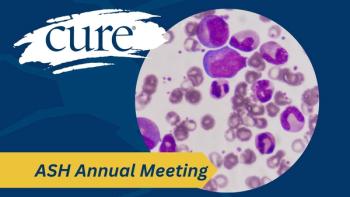
Expert Explains Prognosis Indicators, Treatment Plans in MCL
Some patients with mantle cell lymphoma can opt for a wait-and-watch approach, while others will need more aggressive treatment.
There are multiple aspects that determine the prognosis and treatment regimen of patients with mantle cell lymphoma (MCL), according to Dr. Elizabeth Bengtson, director of the lymphoma program at the Dartmouth-Hitchcock Medical Center.
The World Health Organization (WHO) classifies some patients as leukemic non-nodal – a group of patients that make up 20% or less of MCL diagnoses – who tend to have an elevated white blood cell count and enlarged spleen, they do not typically have cancer in their lymph nodes.
Leukemia non-nodal MCL also does not tend to have SOX11 overexpression, which is a marker that can indicate a more aggressive cancer.
“These patients actually sometimes do quite well, and may not need treatment,” Bengtson said in a recent webinar on MCL hosted by the Lymphoma Research Foundation. “They can be watched without treatment, often for years.”
Other factors, like blastoid or pleomorphic variants, tend to lead to a more aggressive disease, Bengtson explained, noting that more is now known about markers that can indicate a MCL prognosis.
“What’s really on the horizon and is probably going to be the most important thing in years to come is molecular markers,” Bengtson said. “Those are basically genes that are turned on or turned off – some make the lymphoma more aggressive, and some actually make it less aggressive.”
For example, TP53, CDKN2A and NOTCH1 markers all suggest a more aggressive lymphoma.
Now that more is known about the molecular markers, the next step in MCL research is figuring out treatments that target individual patient’s specific disease.
“We’re just on the horizon of using molecular markers … Once you’ve identified molecular markers, the next step is going to be: How do we target those? And possibly, treat specifically with a specific biomarker in mind,” Bengtson said. “We’re not quite there yet, but it’ll come.”
But for now, patients with MCL should consider enrolling in a clinical trial, especially in the relapsed/refractory setting or after a stem cell transplant.
“It’s always best to consider a clinical trial if that option is available to you… it has been proven that patients on clinical trials actually get better care because there’s so much attention for patients on trials because (trials are) so carefully monitored by the FDA.”
Other treatment options include the watch-and-wait approach, mainly for patients with leukemic non-nodal MCL, and then most patients will be treated with a chemoimmunotherapy regimen, which includes a combination of chemotherapy and immunotherapy drugs.
Currently, the only curative option for MCL is an allogeneic stem cell transplant, “however, that can change in the future,” Bengtson said. “So what are we trying to do? We are trying to give our patients the longest remissions with the least toxicity and prolong their life as long as possible while maintaining a good quality of life.”
For more news on cancer updates, research and education, don’t forget to





